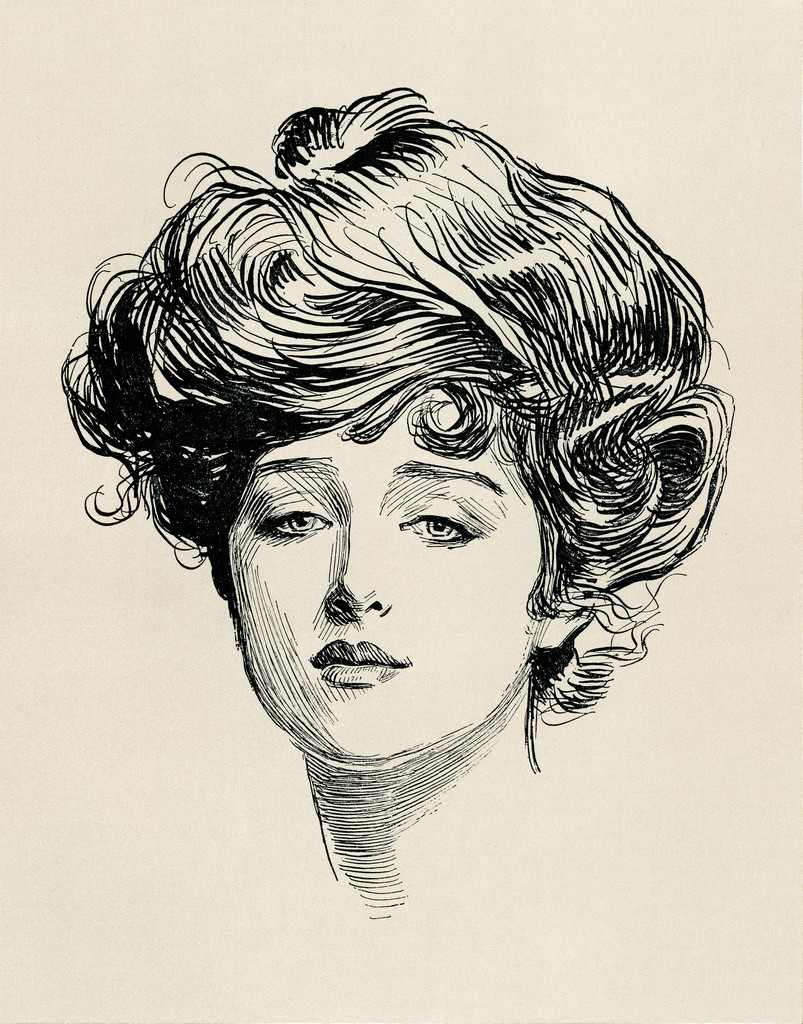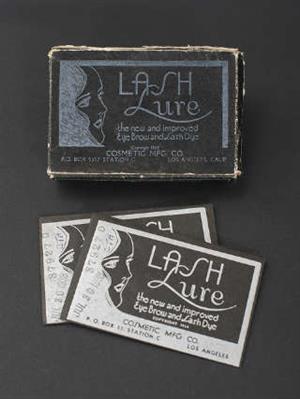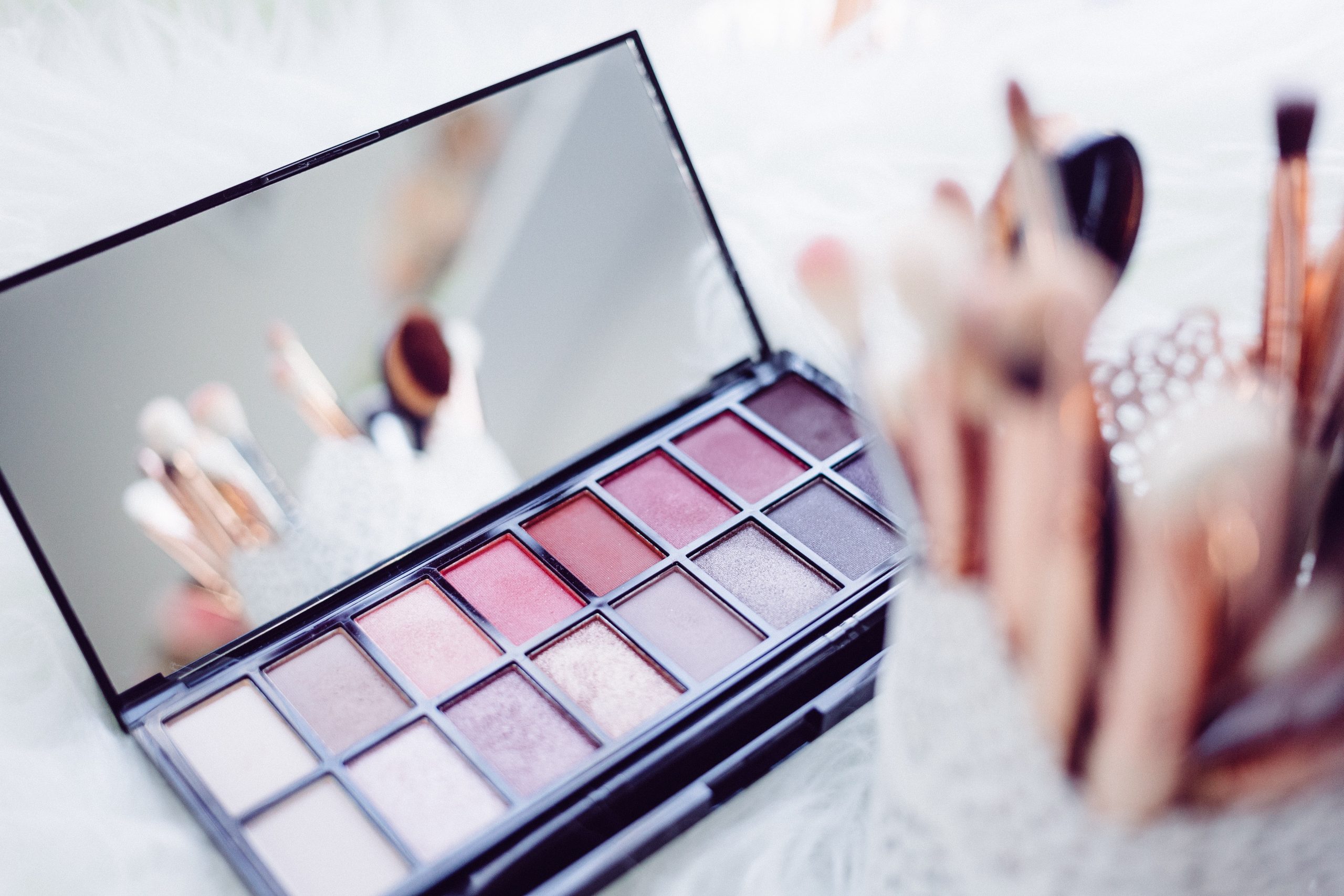Federal regulations regarding the safety of ingredients in cosmetics sold in the United States haven’t been updated since 1938…but why? How many of your beauty products are toxic? Read to find out.
My Harsh Introduction to the Toxic Beauty World
When I was growing up, my mom ALWAYS insisted on using direct-from-nature beauty products and personal care items. Even though she grew up in the ‘80s and used to use enough hair spray to encase herself like a bug trapped in amber, she realized that she didn’t look or feel all that awesome even though she ate clean, exercised, and drank water like a fish.
After finding a holistic health book that talked about creating your own beauty products, she realized the relationship between the commercial products she was using and the decline in her overall health.
My mom started reading the labels on her products and began to research what these mysterious words actually meant…pseuroflavowhattawah?! She was horrified to learn that her beauty routine was what caused her general feeling of unwellness. The stuff that was supposed to add to her natural beauty was actually KILLING HER with its toxic ingredients!
The Start of Something Bad
Before middle school, I had beautiful, smooth olive skin. When I entered 7th grade, I noticed that other girls had started wearing makeup. I wanted to fit in so I also wanted to wear makeup.
I begged my parents to buy me foundation, powder, and mascara. After a few months of use, I noticed that I was getting some severe acne; it wasn’t like the zits my friends were getting.
This was something different.
Thinking I was helping my skin, I began to abrasively scrub it with a Neutrogena exfoliator until I was pink and raw. I also cleansed with Cetaphil, used a heavily perfumed moisturizer, and covered the volcanoes with even more makeup.
Things only got worse in high school.
By this time, I had really bad acne…and I mean really bad. Like it was so bad that the majority of the skin on my face, chest, and back was acne. And it wasn’t the small pustules that plague you from time to time. This was the hardcore, cystic acne that fucked up your life if you were a teenage girl.
My mom kept insisting that it was due to the products I was using, but being a teenage girl I put her on mute because I, of course, knew *everything* at age 15. I had the insane notion that if the product didn’t burn, sting, or hurt my skin in some way that it wasn’t working.
“Stay Out of the Sun”…in Arizona
I sought help from a dermatologist because I was desperate to get my skin clear. They prescribed me 3 medications that I was to take for about 6 months: two were topical ointments, and the other was a pill. The label on the bottle of pills read: ‘could cause severe liver damage.’ The topical ointments read: ‘stay out of the sun when using.’
I lived in Arizona.
There was absolutely no way I could avoid the sun unless I never left the house! But, as I said before, I was desperate to try anything.
The pills ended up making me feel horrible, plus I didn’t feel like myself when I took them. I felt extra hormonal (which says a lot coming from a teenage girl). Plus, the prospect of liver damage actually scared me more than the pustule volcanoes all over my body. I stopped taking the pills, but continued my regimen of one topical ointment in the morning, the other at night.
Two ointments. Twice a day. For 3 months.
Then it happened.
The Day My Skin Changed Forever
A red patch that looked like Italy began to form on my right cheek…oh great. I discontinued my use of the ointments, hoping that my skin would go back to normal…but it was too late. The damage was done. The topical ointments had counteracted with the sun, even though I had avoided it as much as humanly possible. I now have a permanent scar on my cheek; a reminder of all the nonsense I brought upon myself because of the harmful chemicals in the makeup I started using which lead to my terrible acne.
It wasn’t until after all of this that I tried my mom’s approach; a completely natural approach to skincare. It only took a few weeks before I noticed the severe inflammation in my skin had dissipated. My acne disappeared.
I’ve said it before and I know I’ll say it again at least a million more times in this lifetime: I wish I had listened to my mom sooner.
A Brief History of Cosmetics in Early 20th-Century America
Harmful ingredients that cause inflammation aren’t a new, emerging trend that cosmetic companies have recently adopted. This is part of a much larger and older problem that, unfortunately, does not appear to be giving way to cleaner products any time soon.
The 1890s-1910s

Bridging the gap from the end of the 19th century to the start of the 20th century in America, beauty ideals for white women were a far cry from the heavily made up appearances that emerged in the 1920s and 1930s.
The Gibson Girl, created by Charles Dana Gibson (hence the name), was the epitome of white female beauty with her smooth, clear complexion, faintly rosy cheeks, and her romantic upswept hair.
The Gibson Girl represented the archetype of the “New Woman,” whose unparalleled beauty was supposed to be natural and makeup-free, a remnant from the Victorian era approach to beauty.
Women sought out a natural makeup look to evoke the Gibson Girl ideal. The primary beauty regimen for women was to pluck their eyebrows, use rice powder to keep their skin shine-free, massage their eyelashes with castor oil, and buff their nails for a natural shine.
Natural products, like beet juice, were used to enhance the natural redness of a woman’s lips and cheeks. Clear pomade was also used on the lips to enhance the natural lip color.
The 1920s

With the introduction of mass-marketed mascara in 1914 by T.L. Williams, the founder of Maybelline, and the use of heavy makeup in early film, women began to wear more pronounced makeup.
At the start of the 1920s, the in-vogue style was heavy “pancake” face makeup and heavily lined eyes with a kohl pencil to enlarge the eye shape, a la Clara Bow and Louise Brooks.
Kohl pencils and face powders, however, contained lead, causing lead poisoning to the women who wore them. Additionally, with the increased popularity of cosmetic tattooing by George Burchett, women were also subjected to health problems, including allergic reactions, that stemmed from permanently tattooing the eyebrows, area around the eyes, and lips.
The 1930s & “Lash-Lure”

It wasn’t until the 1930s that makeup became very harmful, especially a product called “Lash-Lure,” a product used to dye the eyebrows and eyelashes.
In 1933 and 1934, the Journal of the American Medical Association reported that six known cases of injury to the eyes, including blindness, was caused by ‘Lash-Lure,’ due to its toxic ingredients.
Their initial reports in July 1933 stated that severe dermatitis of the eyelids and surrounding skin and exuberant conjunctival edema began almost immediately after women dyed their eyelashes with “Lash-Lure.” The only way to completely eradicate all irritation and toxicity was to remove all of the wearers eyelashes. Four months later, the JAMA reported four additional cases of irritation from “Lash-Lure,” including a vesicular eruption, keratitis, marked edema of adjacent skin, corneal ulceration, and necrosis…so yeah, pretty nasty stuff.
To make matters worse, a woman aged 52 died in 1934 because of a severe allergic reaction to “Lash-Lure.” Within a few hours after completely plucking out her eyebrows and applying the product to her eyebrows and eyelashes, her right eye was swollen shut and her core temperature had risen to 104 degrees Fahrenheit. She was suffering from deep ulcerations of the right eyelid and palpebral conjunctiva. A little over a week later, she died from complications of a bacterial infection caused by the deep ulcerations of her right eyelid.

After testing, it was found that “Lash-Lure” contained a poisonous compound, paraphenylenediamine. This chemical comes in a white powder form that is derived from aniline, a component of coal tar. PPD can cause an allergic reaction in users that ranges from mild dermatitis to an urticarial reaction. In some rare cases, it can even lead to anaphylactic shock.
At the Century of Progress World’s Fair hosted in Chicago from 1933-1934, the Food and Drug Administration and the United States Department of Agriculture joined forces and set up a booth to alert the country to the horrors of this harmful product. They featured shocking before and after photos of the women who had been adversely affected by “Lash-Lure,” causing viewers to proclaim their shock and disgust at the product.
The Establishment of the Federal Food, Drug, and Cosmetic Act in 1938
Due to the general public’s increasing knowledge and disdain for these dangerous products, the Federal Food, Drug, and Cosmetic Act was established in 1938.
According to Title 21, Chapter 9, Subchapter 6, Section 361 of the Federal Food, Drug, and Cosmetic Act, the passage on cosmetic safety reads:
A cosmetic shall be deemed to be adulterated—
(a)If it bears or contains any poisonous or deleterious substance which may render it injurious to users under the conditions of use prescribed in the labeling thereof, or under such conditions of use as are customary or usual….
(d)If its container is composed, in whole or in part, of any poisonous or deleterious substance which may render the contents injurious to health.
While this legislation appears to be effective in keeping out the nasty ingredients that can harm people, I’m sorry to report that the bulk of cosmetics on the market STILL contain harmful ingredients. But how is this allowed to happen?!
The Good, The Bad, and the Downright Horrifying
The traditional beauty industry was valued at over $530 BILLION dollars in 2019. They are able to conceal the fact that there are some nasty ingredients in their products, like hormone-changing, cancer-causing ingredients, because they can afford to do so. According to the Environmental Working Group:
“Since 2009, 595 cosmetics manufacturers have reported using 88 chemicals that have been linked to cancer, birth defects or reproductive harm in more than 73,000 products.”
Woah.
Unlike our food regulation here in the United States (which still isn’t all that great), the beauty industry has almost zero federal regulation and the only piece of federal regulation that is currently in place hasn’t been updated in OVER 80 YEARS! In the European Union, there are over 1,300 chemicals that have been banned from use in cosmetics due to their questionable nature. In comparison, the U.S. has only banned 11 chemicals…11!!!
I am sharing my list of the most common harmful ingredients that are currently in beauty products in the hopes that you can and will educate yourself about the products that you use.
Please, whenever you buy anything make sure that you read the label!
The Toxic 20: Beauty Product Ingredients to STAY AWAY FROM!
This list is from the Environmental Working Group and contains the most common toxic ingredients that are in beauty products and a brief description of how they can harm you or your loved ones.
- Artificial fragrance/parfum —
- The chemicals used to create artificial fragrances are linked to a myriad of chronicle health problems, including endocrine-disruption, migraines, respiratory problems, and cancer.
- There are currently no federal regulations for the chemicals used in the fragrance industry, so opt for products with scents that derive from organic sources.
- Asbestos
- Carcinogenic and can cause lung diseases if inhaled.
- Carcinogenic and can cause lung diseases if inhaled.
- Carbon black
- Carcinogenic.
- Carcinogenic.
- Formaldehyde & Formaldehyde releasers
- Carcinogenic, causes allergic reactions, and irritates the eyes and respiratory system.
- Carcinogenic, causes allergic reactions, and irritates the eyes and respiratory system.
- Lead and related compounds
- Severely affects the brain development of children and causes permanent damage to the nervous system. It also harms vital organ systems, particularly the cardiovascular system and the heart.
- Severely affects the brain development of children and causes permanent damage to the nervous system. It also harms vital organ systems, particularly the cardiovascular system and the heart.
- Mercury and related compounds
- Is a heavy metal that can damage the nervous system, kidneys, and brain functions. It can also harm the developing fetus.
- Is a heavy metal that can damage the nervous system, kidneys, and brain functions. It can also harm the developing fetus.
- Parabens
- Isobutylparaben and Butylparaben are endocrine disruptors that can harm the development of the male reproductive system.
- Isopropylparaben and Propylparaben are endocrine disruptors that can mimic estrogen.
- Perfluoroalkyl and polyfluoroalkyl substances (PFAS)
- Increase the risk of cancer, affect the immune system, disrupt hormones, and can harm developing fetuses.
- Increase the risk of cancer, affect the immune system, disrupt hormones, and can harm developing fetuses.
- Phthalates
- Dibutyl phthalate is an endocrine disruptor. They are also harmful to the male reproductive system and can cause early puberty in boys.
- Diethylhexyl phthalate is also an endocrine disruptor and also harms the reproductive system. It can also harm developing fetuses.
- Toluene
- Toxic to the brain and nervous system. It can also harm developing fetuses.
- Toxic to the brain and nervous system. It can also harm developing fetuses.
- Triclosan
- Affects thyroid and reproductive hormones.
Additional Harmful Product Ingredients
While these ingredients didn’t make the Toxic 20 list, that doesn’t mean that they are any less harmful. In addition to being an active ingredient in beauty products, these are also some ingredients that can be found in the packaging of your products.
- Bisphenol A (BPA)
- Effects brain function and the prostate gland of fetuses, infants, and children. It can also affect children’s behavior. There is also a possible link between BPA and increased blood pressure.
- BPA is found in most consumer packaging, namely water bottles. For all of your products, seek out glass, stainless steel, and plastic alternative packaging.
- Effects brain function and the prostate gland of fetuses, infants, and children. It can also affect children’s behavior. There is also a possible link between BPA and increased blood pressure.
- Ethanolamines
- Can cause allergic reactions.
- Can cause allergic reactions.
- Homosalate
- Can cause endocrine disruption.
- Can cause endocrine disruption.
- Mineral Oil
- Is a byproduct of petroletum which is carcinogenic.
- Is a byproduct of petroletum which is carcinogenic.
- Octinoxate
- Can cause endocrine disruption and is bad for the environment, specifically coral reefs.
- Can cause endocrine disruption and is bad for the environment, specifically coral reefs.
- Oxybenzone
- Can cause endocrine disruption.
- Can cause endocrine disruption.
- Polyethylene glycol (PEG)
- Can be derived from petroleum and can cause an allergic reaction.
- Can be derived from petroleum and can cause an allergic reaction.
- Siloxanes
- Can cause endocrine disruption and are bad for the environment.
- Can cause endocrine disruption and are bad for the environment.
- Sodium Lauryl Sulfate and Sodium Laureth Sulfate (SLS)
- Can cause allergic reaction. Can also cause respiratory irritation. Sulfates may also be contaminated with a substance called 1,4-dioxane, which is known to cause cancer in lab animals.
My Trusted Beauty Brands
With so many items on the market labelled as “natural,” how are you supposed to know which are safe and are actually derived from nature like their labels claim? I read the label on every product I purchase even if I already own that exact same product or something else by that company.
Why?
Products change all the time! If a vendor can find an easier, more affordable way to make something, most of the time they’ll switch to the more affordable method. This, however, can have damaging effects on you, the consumer. I can’t tell you how many times I had to switch around my skincare and makeup routine before I noticed this on one of my labels.
- Cocokind— great for skincare and makeup! I really love their mushroom-based highlighters for a beautiful, healthy glow. Plus, their products come in glass or BPA-free plastic.
- Dr. Hauschka— their skincare and makeup is out of this world. Plus, their products smell ah-ma-zing! Almost all of their products come in glass!
- Mineral Fusion— I only use their nail polish and nail polish remover. I have reservations about their makeup and skincare products because they contain mineral oil.
- Pacifica— I absolutely love their makeup! They have a great variety of colors and their products look just as fabulous when applied! They use exceptional ingredients, too.
Resources
- The Thinkdirty app is phenomenal if you want to do a quick check on one of your products. You can either type in the name manually or scan the barcode of your product to search through their entire database. Unfortunately, some products haven’t made it in their yet, but it’s still a very helpful resource overall!
- As mentioned, I referenced The Environmental Working Group chart. The EWG also has a database on their website where you can search for your products.
Show Me Your Beautiful Face!
How many products did you have that were filled with ingredients from the Toxic 20? What changes did you make? Let me know in the comments below 🙂
Also, be sure to tag me on Instagram @amara_andrew to show me the before and after photos of your products as well as your healthy, glowing skin! 🙂


Leave a Reply